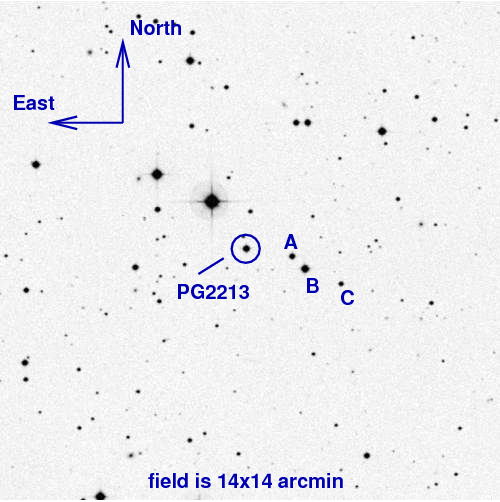
On the night of Oct 18/19, 2018, Brent Neves and I used the 12-inch telescope to conduct some test observations.
Tonight, we chose the field PG2213-006 as our target.
Field center (J2000) 22:16:28 -00:21:15
#Full RAJ2000 DEJ2000 Star RA2000 DE2000 Vmag B-V U-B V-R R-I
"h:m:s" "d:m:s" "h:m:s" "d:m:s" mag mag mag mag mag
1 22 16 18 -00 22.2 PG2213-006C 22 16 18 -00 22 15 15.109 0.721 0.177 0.426 0.404
2 22 16 22 -00 21.8 PG2213-006B 22 16 22 -00 21 49 12.706 0.749 0.297 0.427 0.402
3 22 16 24 -00 21.4 PG2213-006A 22 16 24 -00 21 27 14.178 0.673 0.100 0.406 0.403
4 22 16 28 -00 21.2 PG2213-006 22 16 28 -00 21 15 14.124 -0.217 -1.125 -0.092 -0.110
Here's a finding chart.

The main setup was:
Notes from the night:
This evening, we took 15 x 30-second images in V, I, Swann filters. That wasn't enough -- the I-band images, in particular, had very low signal to noise ratios. Even after co-adding all the I-band images, it wasn't enough to make good measurements.
So, next time, use at least 60-second exposures, and take 20 or more of them in each filter.
As practice for measurements of comets in the future, we chose a moving object with well-known properties to be the target for a short run. (433) Eros is an elongated asteroid with an interesting history. It happens to be passing relatively close to the Earth now, at a distance of only about 0.5 AU. That makes it a fast-moving, bright target for astrometry.
Below is an image of the field, centered around
04:22:57 +52:09:12 (J2000)
A chart of the field is shown below. The size of the chart is about 25 by 25 arcminutes. I've marked a few stars as references.
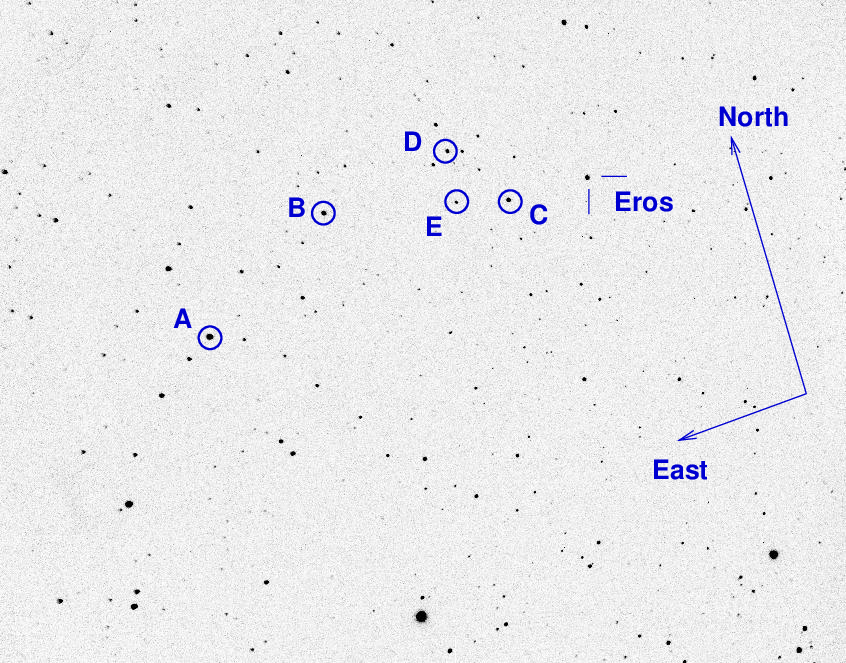
I've marked the location of several comparison stars.
star UCAC4 B V ---------------------------------------------------- A UCAC4 711-033429 10.356 9.951 B UCAC4 712-032780 12.053 11.153 C UCAC4 712-032697 11.830 11.197 ----------------------------------------------------
We ran the camera at -20 C. Nothing out of the ordinary.

The sky value shows no clouds over this brief, roughly 45-minute observing run.

The number of objects detected -- I required 50 objects for an image to be included in the ensemble.
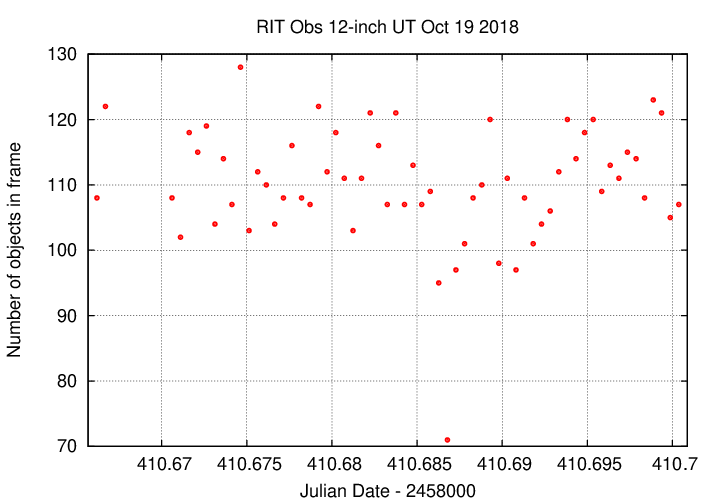
The FWHM is pretty steady.

The photometric zeropoint didn't vary much.
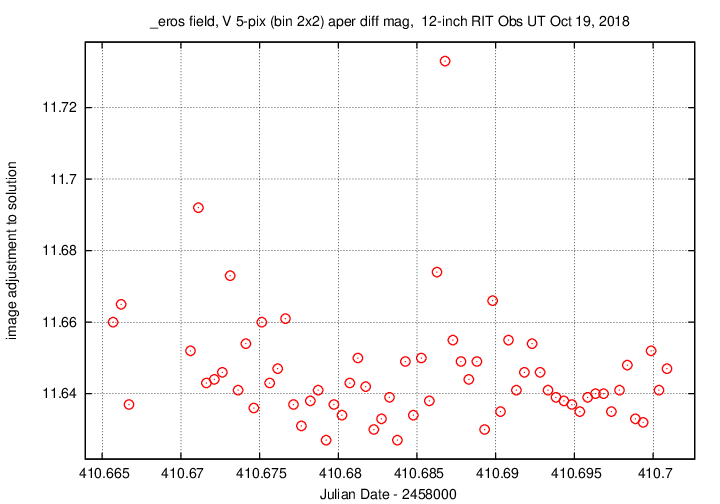
Using aperture photometry with a radius of 5 pixels (binned 2x2, each pixel is 1.34 arcsec, so a radius of 6.7 arcsec), I measured the instrumental magnitudes of a number of reference stars and the target. Following the procedures outlined by Kent Honeycutt's article on inhomogeneous ensemble photometry, I used all stars available in each image to define a reference frame, and measured each star against this frame.
Sigma-vs-mag plots show that the floor was about 0.005 mag overall, which is good.
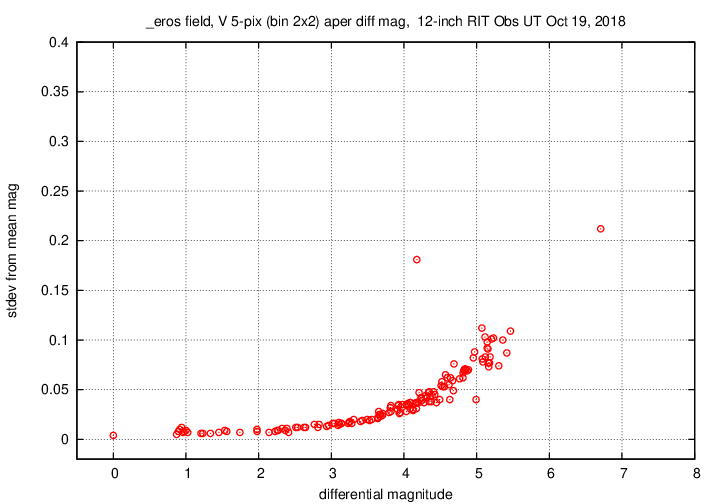
Here are light curves of Eros and the field stars.
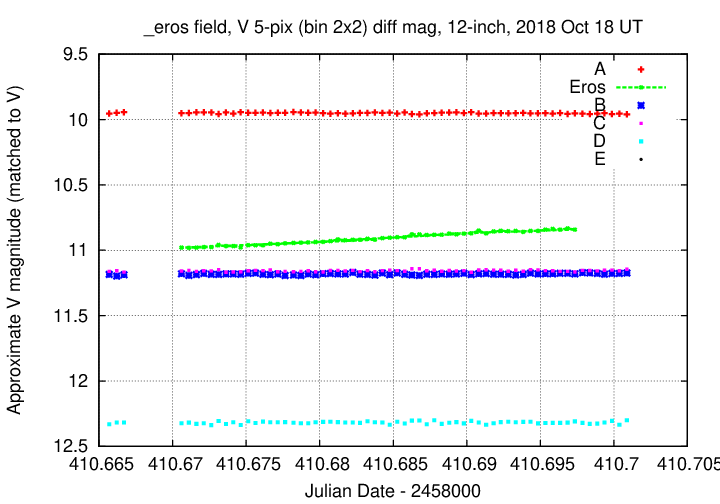
Last modified 10/19/2018 by MWR.